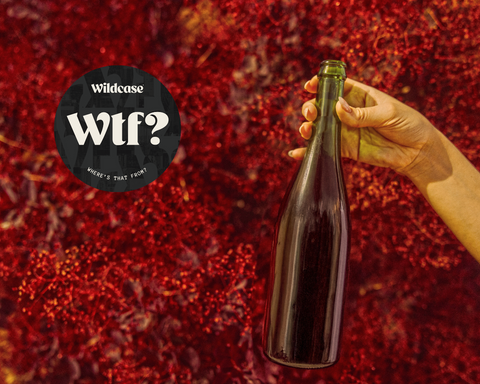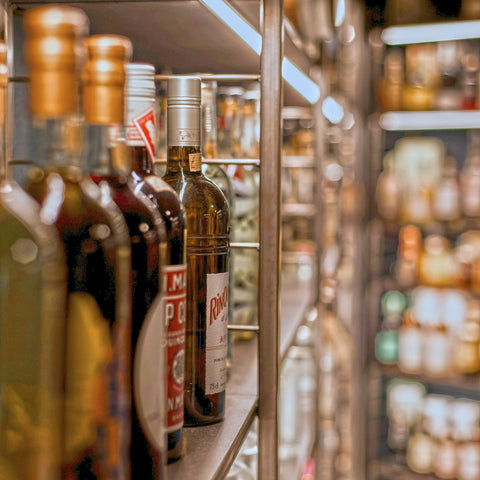What Is Minimal Intervention Winemaking - and Why Should You Care?
Minimal intervention, or low-intervention winemaking is a term you’re likely to be hearing more and more. But what does it actually mean? Is it a good thing? And more importantly, how does it affect the wine in your glass?
Let’s break it down.
What is Minimal Intervention Winemaking?
In short, it’s a winemaking philosophy that encourages as little direct interference as possible from the winemaker - both in the vineyard and in the cellar. The goal is to produce a wine that reflects the true character of the grape being used, and the vineyard where it's grown (known in French as the terroir).
This typically means no synthetic fertilisers or pesticides are used in the vineyard. Grapes are usually grown organically, or biodynamically. During fermentation, natural yeasts are used instead of commercial strains, and all other additives are kept to a minimum.
But Less Direct Intervention Doesn’t Mean Less Effort
Minimal intervention can in fact be a misleading term. It certainly doesn’t mean that less thought and attention goes into the grape growing and wine production. In fact, the opposite is true.
Minimal intervention requires a deeper knowledge of the vineyard ecosystem, and more attention throughout the growing season. Without additives to mask imperfection or stabilise flavours later, the quality of the vineyard and their grapes matters more than ever - and winemakers must work with nature to perfect both in their purest form.
Plus, there are a huge amount of choices that these winemakers do make - when to harvest, which grapes to blend, how to manage the vines, how long to leave the grapes on their skins, which vessels to ferment in - which all impact the final wine. These decisions arguably become even more important for low intervention winemakers.
So whilst there is less direct manipulation of the grapes or wine, there is a huge amount of attention and skill taking place throughout the process to ensure the end product is of the highest quality.
What's the difference between Minimal Intervention and Natural Wines?
There are plenty of similarities and overlap between the two. And it's important to note there isn’t a single defining criteria for either.
Both primarily promote the benefits of less human invention and increased focus on natural substances. But natural wines can be thought of as an even more extreme version of low-intervention winemaking. With even less allowance for human input, whether in a naturally deemed way or not.
Natural wines for example, place greater emphasis on eradicating all filtration. And farming practises like irrigation are generally avoided. The aim is to create a 100% natural product with zero interference.
Minimal intervention wines, on the other hand, allow a bit more flexibility. The focus is still on purity and minimal additives, but there’s room for winemakers to step in when necessary, especially to preserve quality or balance.
Are Minimal Invention Wines Better Quality?
It's very difficult to say that lower intervention wines generally are of a higher quality than conventional wines. A whole range of factors depict the final quality of a wine - vintage, weather, region, climate, some winemaking techniques etc. These exist whether a wine has been made in a conventional way or not.
But that said, there are some clear benefits to a more minimal approach on the wine's quality. Organic farming for example, is increasingly recognised as a key element for improving grape health. And better grapes generally lead to better wine.
Plus, fewer manipulations during winemaking can preserve texture and flavour compounds that may otherwise be lost during processes like filtration.
So whilst it's not accurate to say that all minimal intervention wines are automatically a higher quality, it is true that many of the associated methods can often benefit the wine's flavour and character.
What are the other benefits?
With less filtration, it is generally accepted that most minimal intervention wines will have more antioxidants present as well. Winemakers also try to reduce levels of sulphites added before bottling. And whilst sulphites are produced naturally during winemaking, lower levels can be useful to those with intolerances.
Aside from the wine, there are also advantages from an environmental and sustainability perspective. Using less chemicals, less water where possible, and less machinery can all help to lower the environmental impact.
What Are the Drawbacks?
Consistency of wine can be a challenge, especially from vintage to vintage. Low intervention wines are more likely to reflect the ups and downs of any bad harvests. In a difficult year for grape growing, there are less places to hide. But proponents argue a lack of consistency is not a bad thing, and skilled winemakers can adapt to different conditions by producing different wines each year that are more representative.
How to Choose a Good Minimal Intervention Wine
As with every style of wine, there are good versions and bad ones, so more consideration is needed. Hunting out producers with good reputations is even more important when it comes to minimal intervention wines.
At Wildcase, we believe that minimal intervention wines can be an incredible choice when made with care and expertise, and we personally taste and assess every one of the wines in our collection to ensure quality.
If you're curious to discover more low-intervention wines, browse the wines in our online shop, or join the Wildcase members club to have small batch wines with a difference delivered straight to your door.





